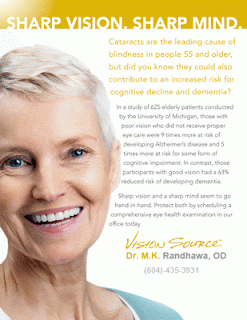Having a retinal tear does not necessarily mean that your eye is generally unhealthy or compromised. However, people who are highly myopic have a higher risk of developing a retinal tear because their eye is elongated which puts a strain on the retina. Note that the risk of retinal tears remains even after laser vision correction because laser vision correction does not correct the elongation of the eye.
A retinal tear is usually treated by a surgeon who will use a laser to seal the tear. Sometimes the tear cannot be sealed completely which will result in a permanent loss of vision in a small part of the visual field of the affected eye. However, patients usually never notice this because the healthy eye will compensate for the eye with the small tear.
A common sign of a retinal tear is to have flashes or floaters in your vision. If this happens, see your optometrist right way. If a retinal tear is found, you will be immediately referred to an eye surgeon for treatment.
















